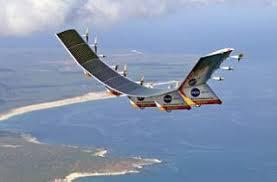Exploring the Role of High Altitude Long Endurance UAVs in Modern Surveillance

The defense sector remains the primary and most significant driver of the global HALE market, with an insatiable demand for persistent intelligence, surveillance, and reconnaissance (ISR). A detailed market assessment of High Altitude Long Endurance platforms confirms that military applications constitute the largest share of revenue, fueled by the need for continuous, wide-area situational awareness in complex and contested geopolitical environments. HALE platforms provide military commanders with a "God's-eye view" of the battlespace, operating at altitudes that offer vast sensor coverage while remaining beyond the reach of many short- and medium-range air defense systems. This capability is critical for a wide range of missions, including monitoring hostile borders, tracking high-value targets, identifying missile launch sites, and providing overwatch for friendly forces. The strategic value of this persistent stare, which can loiter over a target area for more than 24 hours, offers a distinct advantage over the predictable and periodic coverage provided by reconnaissance satellites, making HALE systems an indispensable asset for modern military operations.
The mission payloads integrated onto military HALE platforms are becoming increasingly sophisticated and multi-functional. The core payload typically consists of advanced sensor suites, including high-resolution Electro-Optical/Infrared (EO/IR) cameras for detailed imagery intelligence (IMINT), Synthetic Aperture Radar (SAR) systems that can see through clouds and darkness, and sophisticated Signals Intelligence (SIGINT) packages for intercepting and locating enemy communications and radar emissions. Platforms like the RQ-4 Global Hawk have demonstrated the ability to collect and transmit vast quantities of multi-intelligence data in near real-time to ground stations anywhere in the world via satellite data links. The High Altitude Long Endurance size is projected to grow USD 39.28 Billion by 2035, exhibiting a CAGR of 7.3% during the forecast period 2025-2035. This capability to collect, process, and disseminate critical intelligence is a force multiplier, enabling more informed and timely decision-making from the tactical to the strategic level.
The future of military HALE applications is focused on enhanced survivability and network-centric warfare integration. As near-peer adversaries develop more advanced long-range air defense systems, the survivability of HALE platforms in contested airspace has become a key concern. In response, the market is seeing increased investment in low-observable (stealth) technologies, advanced electronic warfare (EW) self-protection suites, and networked defensive capabilities. Furthermore, HALE platforms are evolving from simple ISR data collectors into critical nodes in network-centric warfare constructs like the U.S. military's Joint All-Domain Command and Control (JADC2). In this role, they will act as high-altitude communication relays and data fusion hubs, connecting disparate assets across air, land, sea, space, and cyberspace to create a unified operational picture. This expanded role ensures that military demand will continue to be the main engine for R&D and market expansion for the foreseeable future.
Top Trending Reports -
- Art
- Causes
- Crafts
- Dance
- Drinks
- Film
- Fitness
- Food
- Jocuri
- Gardening
- Health
- Home
- Literature
- Music
- Networking
- Alte
- Party
- Religion
- Shopping
- Sports
- Theater
- Wellness
